Join More Than 50,000+ Subscribers and get latest camera news and rumors
NEW CAMERA VIDEOS ON YOUTUBE
|
By admin, on March 1st, 2017
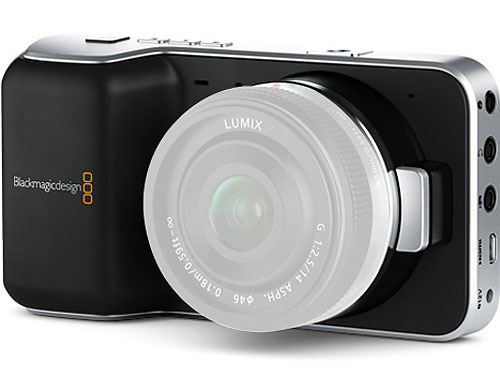
Latest rumors suggest that blackmagic pocket mirrorless camera is expected to announce tomorrow. The camera will going to future M4/3 third Mount and will going to record 4K videos, the battery life will get a boost when compared to previous versions BM camera
The camera announcement will be live streamed on the YouTube (shown below)
https://youtu.be/XXAVGEiSA_c
Stay with us on FACEBOOK | TWITTER | GOOGLE+ to get live news Camera Rumors
By admin, on April 19th, 2015
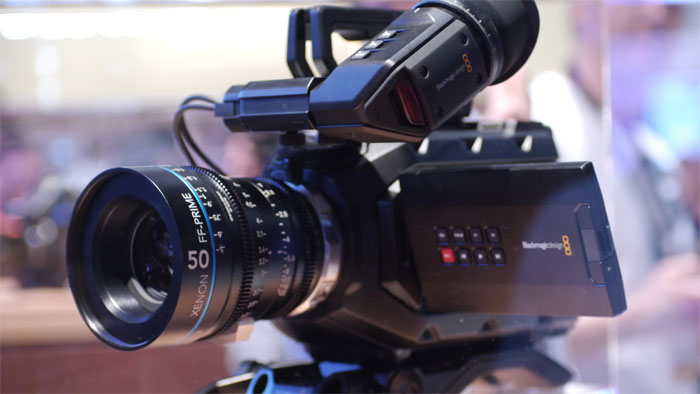
Without question, the Blackmagic Design booth at NAB drew a record crowd this year, and for good reason. Not only did they have an upgrade path for the URSA, via a new sensor and v2.3 firmware, they also introduced two new cameras, the first of which is the baby brother to URSA. The URSA Mini, as its called, has performance unheard of in a price point raging from 5k to $5500 US, depending on mounting options, Canon EF or PL mount. The URSA Mini, like its sibling, offers a new sensor with an astonishing 15 stops of dynamic range and an improved ISO versus the old 4k sensor, which had an ISO of400 andanadequate 12 stops of dynamic range. For Blackmagic and enthusiasts alike, this may be the camera everyone has been waiting for.
First of all, the new Mini weighs less the full size URSA. Coming in at 2.3 kg or 5 lbs., the camera weighs about a quarter of what the URSA does. Although this does not include the various items one needs to kit it up, this makes URSA Mini more than manageable for hand held work. To assist the operator in handheld environments, the Mini comes with an affordable accessory kit. The Mini has an optional shoulder pad, which attaches nicely to a quick release plate. But, that is not all. In addition to the shoulder pad, which can hold two 15mm rods, a handle accessory mounts on the top of the camera for carrying. An extender arm, which attaches to the base kits control handle, is reminiscent of Sony’s FS7. This accessory kit retails for $395 US and is a must have for hand held shooting environments.
Although test footage will be forthcoming in the subsequent months ahead, the new sensor available for the Mini should render some amazing images. The new sensor, which sports a 4.6k resolution, is now rated at 800 ISO compared to the old 4k sensor. The old sensor had mediocre low light performance that I will not delve into here, as it is well known and has been documented at nauseam. The new sensor has an ISO range of 200-1600 ISO, a marked improvement over the previous 400-800 ISO offered on the Blackmagic Production Camera and the 4k URSA, which had a native 400 ISO. If the new ISO range and the 800 native ISO of the new sensor is any indicator of low light performance, the 4.6k sensor should be approximately 1 stop faster than the old sensor. So, theoretically, the new sensor should be a marked improvement in low light performance.
If you thought the Blackmagic Mini only had one accessory kit available, you would be mistaken. With Blackmagic receiving feedback from shooters, they decided to enter the viewfinder market as well. The new viewfinder cabling attaches to the right side of the camera via a 4-pin XLR cable for power and a standard 3g SDI BNC connector. Yielding an astounding 1920×1080 resolution, the new viewfinder option sports real glass optics, agenerous diopter range to accommodate most operators, and an east to west adjustment to suit one’s ergonomical preference. Look for the viewfinder to retail for $1500 US.
The new viewfinder is not the only viewing option. Like the original URSA, the Mini has a fold out high-resolution screen.Opposed to the 10in screen available on big brother, the Mini’s screen is 5in, but more than adequate as a viewing solution. Like the viewfinder option, the side monitor sports a 1920×1080 resolution and is as sharp and accurate as the larger 10in screen.In addition to being a viewing option, like all previous Blackmagic camera models, this new monitor features touch screen access to the camera’s menu.
A production camera would not be a viable option without professional audio, and here the Mini does not disappoint. Mounted in a unique position on the camera, Blackmagic Design decided to place two XLR inputs on the top rear of the camera. Blackmagic claims that the XLR inputs will record 24bit audio at 48,000Hz, an excellent option for single system recording when audio quality counts.
New for any Blackmagic camera, the Mini records more resolutions than ever before. Actually, the Mini has 7 different resolutions ranging from 1920×1080 to 4608×2592. Included resolutions are: 4608×2592, 4608×2304 (4K 16×9), 3840×2160 (Ultra HD), 3072×2560 (3K Anamorphic), 2048×1152 (2K 16:9) &1920×1080.These new resolutions can be recorded to CinemaDNG 3:1 180MB/s, CinemaDNG 4:1 135MB/s and variousflavors of ProRes CODES ranging from ProRes Proxy to ProRes 444.
If the myriad of attendees mobbing the Blackmagic Design booth is any indicator, the URSA Mini prototype, which premiered at NAB this year, was a resoundinghit.Holding it on my shoulder with the optionalshoulder pad and extension arm mated to an Arri rosette on the shoulder pad baseallowed me to easily balance theMini on my shoulder, like a traditional ENG camera. The recording media, although still expensive C-fast cards, have come down in price slightly over the past six months. Look for the price to come down further now that the new Canon C300 Mark II requires the same media. With recording options galore, 15 stops of latitude, and better low light performance than its predecessor, the new URSA Mini will be the least expensive, highest quality cinema camera option availablein a growing and robustproduction marketplace.
About the Author: Thomas Cznarty is a lecturer at the State University of New York at New Paltz. Currently, he teaches in the Communication and Media department. He writes poetry, short fiction and screenplays. Thomas Cznarty is also a filmmaker and media producer with a strong background in film and television production.
Previous article – A Detailed Look – Blackmagic URSA and CFast Cards
By admin, on April 13th, 2015
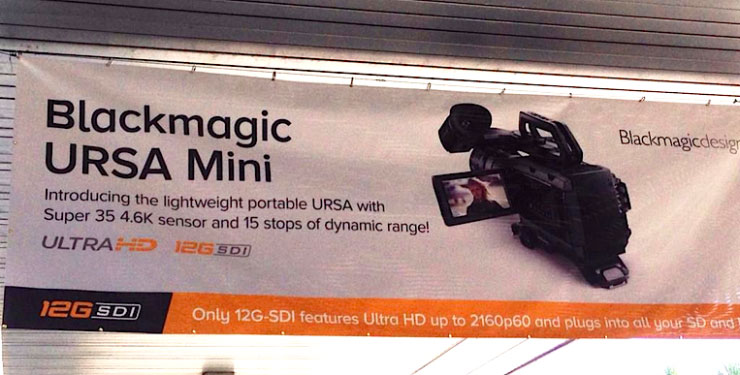
Leaked images of upcoming blackmagic camera surfaced over the web, as you know we have already published leaked images of upcoming pocket camera here… but this time we got the image of upcoming Blackmagic Camera 4.6K URSA Mini, as the name suggest the camera can capture 4.6K video files. But above all the URSA Mini will feature 15 stops of dynamic range, so 4K+ resolution and 15 stops of dynamic range will sure create a bar in camera industry.
Bonus – The leaked image of ultra compact drone camera from BM also leaked
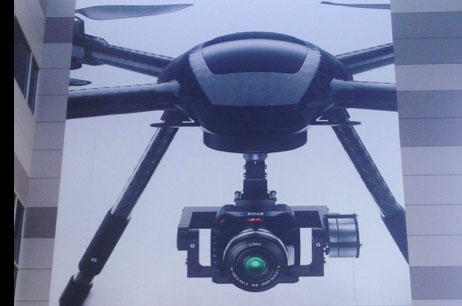 The announcement is expected today.. we will update you as we get any new information. The announcement is expected today.. we will update you as we get any new information.
src / via – Matthew Allard ACS
By admin, on April 12th, 2015
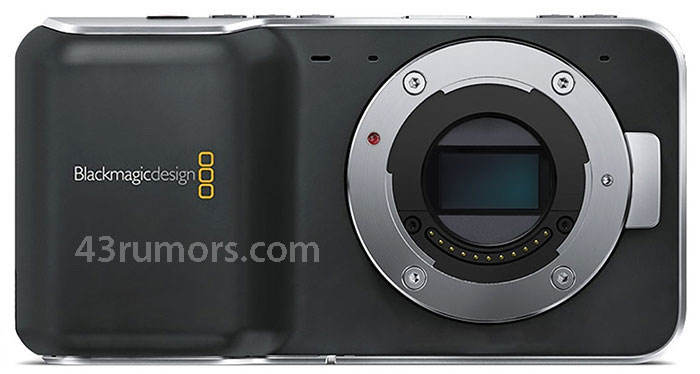
Based on the rumor if we believe the upcoming Blackmagic pocket camera is rumored to feature M4/3 sensor size sensor, the first generation of Blackmagic pocket camera was loaded with Super 16mm Sized Image Sensor but unfortunately it was limited to Full HD video recording.. the upcoming camera will record videos in UHD and will cost you $1599 .
Take a look at the snapshot of leaked specification … we don’t know it’s fake or real.. since its is coming from a new source of 43rumor.com … but the camera design is bit different from the first generation of camera
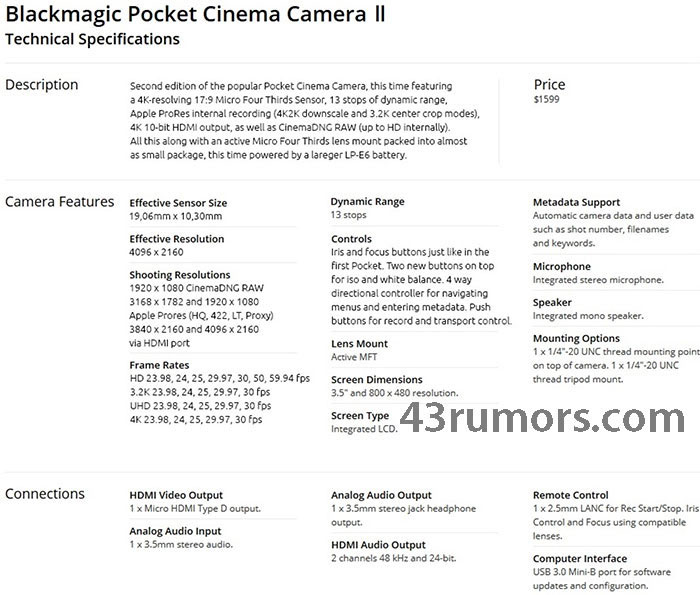 Also take a look at – A Detailed Look – Blackmagic URSA and CFast Cards Also take a look at – A Detailed Look – Blackmagic URSA and CFast Cards
By admin, on July 17th, 2014
 B&H giving straight $500 discount on the BlackMagic Pocket Camera — click here to buy , you can now buy the camera at a discounted price of $495 only. The camera features a 1″ inch sensor and records videos at 1920 x 1080 resolution and captures 13 stops of dynamic range, the pocket camera can also record videos in lossless CinemaDNG RAW or Apple ProRes 422 (HQ) format. The camera accepts all M4/3 series lenses and features a ultra compact design. B&H giving straight $500 discount on the BlackMagic Pocket Camera — click here to buy , you can now buy the camera at a discounted price of $495 only. The camera features a 1″ inch sensor and records videos at 1920 x 1080 resolution and captures 13 stops of dynamic range, the pocket camera can also record videos in lossless CinemaDNG RAW or Apple ProRes 422 (HQ) format. The camera accepts all M4/3 series lenses and features a ultra compact design.
Thanks Willy for the update
By admin, on May 4th, 2014
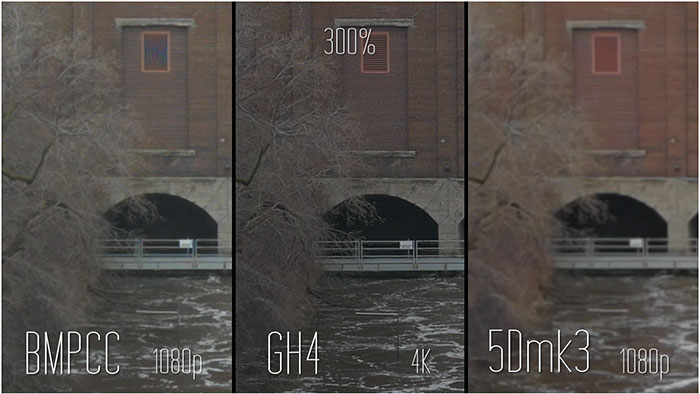
Camera Zone compared all three – Panasonic GH4 vs 5D Mk III vs Blackmagic Pocket Cinema Camera video quality side by side, the Panasonic GH4 showing remarkably sharp video files compared to Canon 5D Mark III or Blackmagic Pocket Cinema Camera, other thing should be considered is Panasonic GH4 was set to record 4K (highest quality available ) during the test, after that GH4 4K is downscaled to 1080p. .
Buy Canon 5D Mark III From Amazon|| Buy Panasonic GH4 at Amazon| from B&H
By admin, on April 14th, 2014
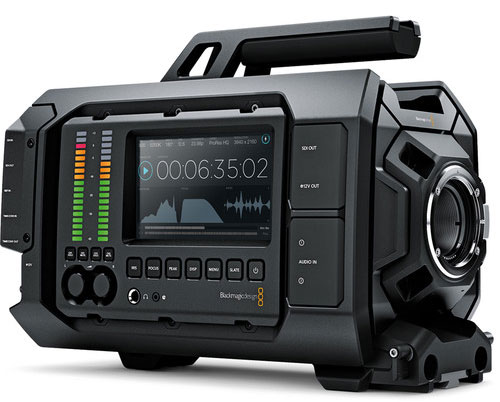
Recently, at NAB, Blackmagic Design stunned the production world with a revolutionary new 4K camera. Called the URSA, this new production camera from Blackmagic has features never seen before features on a camera with a price point under $7,000 US (Blackmagic URSA at B&H). First of all, the URSA has a 10-inch fold out monitor attached to the body of the camera on the DOP side via a heavy-duty hinge—this should last years of heavy production usage. Not only does the camera come with a large 10.1-inch monitor, it’s 1920×1200 resolution—a first for any production camera in terms of size and resolution. Thus, saving two-grand on a Marshall 9 inch or similar 3GSDI monitor. Next, the URSA comes with an interchangeable mount and sensor via the removal of four screws. This allows the user to change from EF to PL to B4 mount in a matter of minutes. Lastly, this leads us to our final item—the use of a new standard, the CFast media card—a blazing fast storage device based on a Compact Flash lineage.
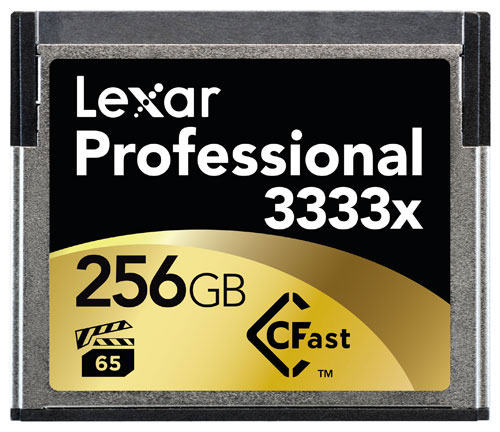
The new CFast cards are based on their predecessor, the CF card. The CF card has been used in a variety of storage applications, most recently the majority of all DSLR cameras. CF, which stands for Compact Flash was the standard for all DSLR cameras up till 2005. According to the Compact Flash Wiki page, “A variant of CompactFlash known as CFast is based on the Serial ATA bus, rather than the Parallel ATA/IDE bus for which all previous versions of CompactFlash are designed. “
After 2005, SD cards gained more traction—especially with the Panasonic GH1 in March of 2009 and then latter with the GH2 and GH3. Prior to the introduction of the GH1, by 2005 SD cards had achieved 40% of the market with manufacturers such as Canon, Casio, Fujifilm, Kodak, Leica, Olympus, Pentax and Samsung using SD cards in many of their consumer product lines.
Flash forward to 2014. Due to the need for faster data transfer speeds with today’s data intensive cinema cameras, the need for faster cards has been part of the explosion in 2K and 4K cinema cameras that have hit the market in recent years. As of the article, there are two cameras, which currently use the new CFast cards: The Arri ALEXA and Blackmagic’s new URSA. Arri states on their website the their reasoning regarding their preference for CFast cards over the older SxS cards originally designed and manufactured by Sony, “Because of their high data rate, CFast 2.0 cards support higher frame rates than SxS PRO cards, enabling recording of ProRes 4444 up to 120 fps. The 120 GB CFast 2.0 cards have about twice the recording capacity of 64 GB SxS PRO cards.”
However, the New CFast cards come with a mixed blessing. On one hand the new cards are fast, fast enough for uncompressed video and the demands of high-speed 4K frame rates. On the other hand, the new CFast cards are not backwards compatible with Compact Flash cards of previous generations, and quite expensive—a 120mb SanDisk CFast card retails for around $1,200. Another item of note is that a 120mb CFast cad can only record 6 minutes of raw data in the new URSA camera and 20 minutes of ProRes, 10-bit 422. Lexar has a 256mb CFast card due out on the market soon, which should double the recording rates of SanDisk’s 120mb CFast card to 40 minutes and 12 minutes respectively. With the advent of a new camera, which gives you so many new features such as a 10.1-inch HD monitor, interchangeable, mounts and upgradeable sensors for future proofing your investment, there is always a give and take. The new CFast media may not be cheap, but as companies like Blackmagic Design and others continue to put affordable kit into the hands of indie filmmakers, the democratizations of cinema production continues to evolve in new and interesting ways.
About the Author: Thomas Cznarty is a lecturer at the State University of New York at New Paltz. Currently, he teaches in the Communication and Media department. He writes poetry, short fiction and screenplays. Thomas Cznarty is also a filmmaker and media producer with a strong background in film and television production.
|
KEEP THIS BLOG ALIVE - Support New Camera Buy Canon Lenses, Buy Music CD or Digital Camera at amazon it helps this site, and you do not pay anything extra, it is just a way to help support this site.

|















